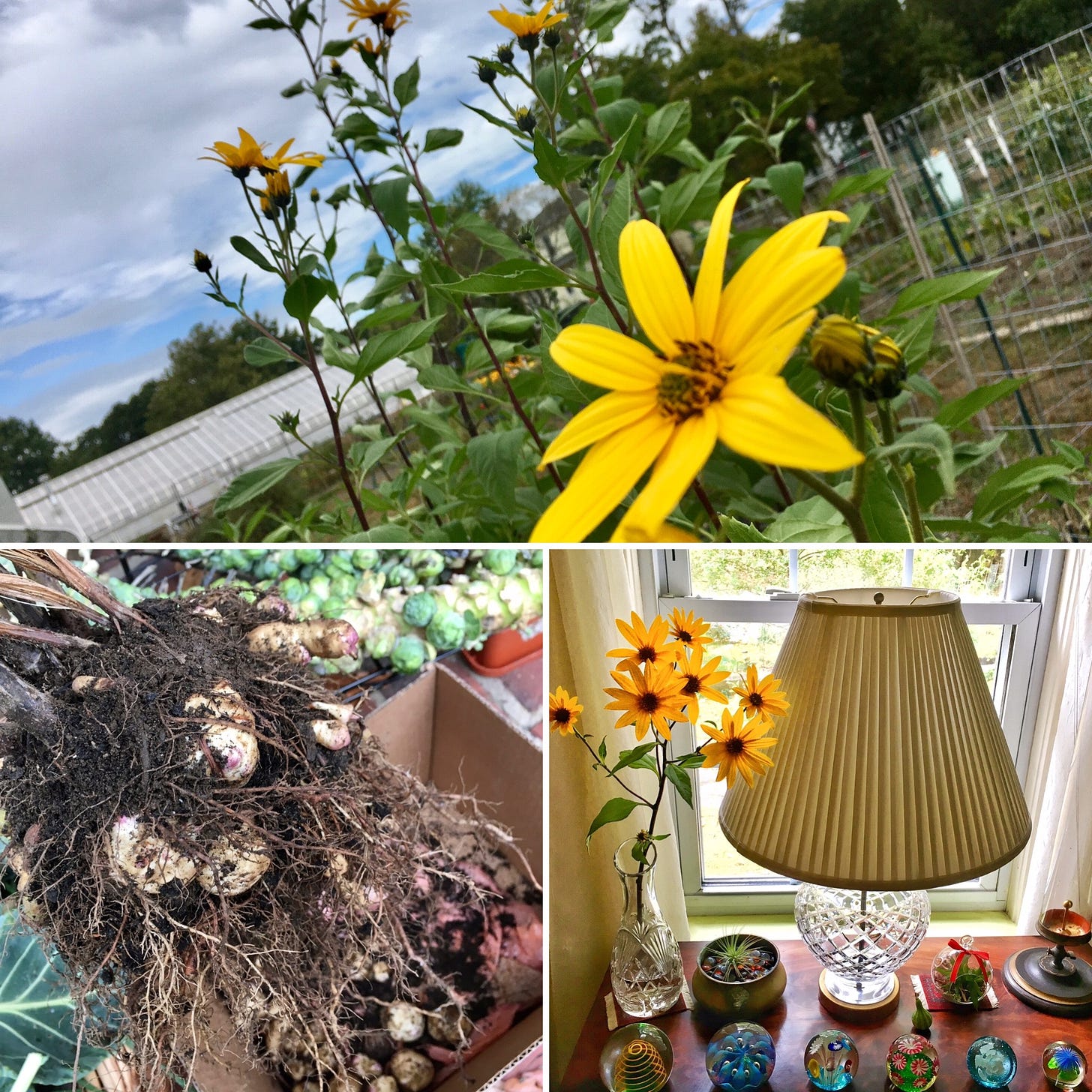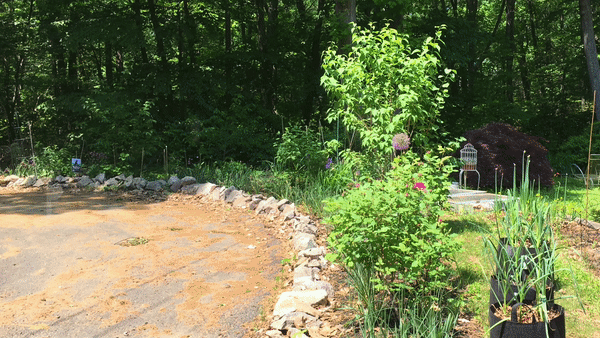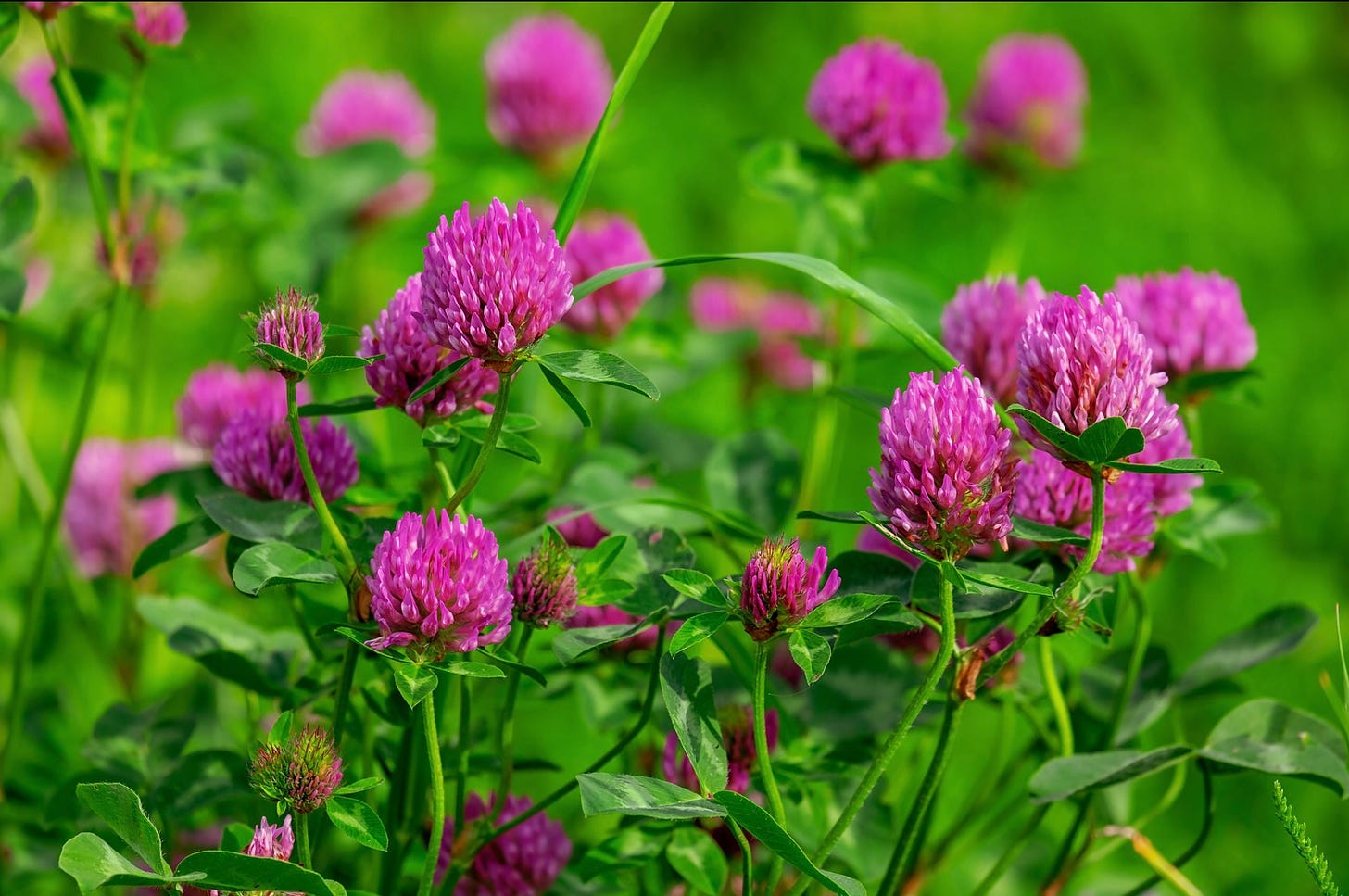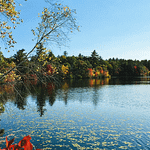#SuperPowersOfTheGarden/2
Wildlife, nature and the environment have always occupied a special place in Marlene’s heart. This passion has led her to volunteer at a rare animal breeds conservation farm in Bulgaria and an organic and permaculture farm in the South of France to learn more about working with nature. In this special mini-series edition, she discusses a piece of nature closer to home: the garden. In 2019, Marlene’s garden was certified as a Wildlife Habitat by the National Wildlife Federation.
In part 1 of Superpowers of the Garden, we said that to re-imagine a garden that is not only aesthetically pleasing, but functional to humans, wildlife and the environment, we need to get to know its superpowers. A garden can provide more than just beauty and food and when we understand her better, we can harness her superpowers to be part of the solution to global warming and declining pollinators. We began our discussion on Garden Elements and Their Superpowers by taking a closer glimpse of soil, one of Earth’s most precious resources.
Even with just the singular function of decomposition, the micro livestock that makes up healthy soil recycles nutrients so that living organisms can make use of them. Soil is so fundamental that no life is possible without it. As if that wasn’t enough, we also learned that healthy soil absorbs and holds rainwater for use during dry spells, filters and detoxifies pollutants and provides water, nutrients and the medium to grow in, for plants and trees. Today, we’ll discuss the next garden elements and explore additional abilities of soil made possible through their symbiotic relationships.
Garden Elements and Their Superpowers
Plants and Trees
All of us know some of the superpowers of plants and trees. We know their value as food, medicine and as a resource for a whole range of items like textiles, paper, dyes, building materials; they also provide shelter and nourishment to wildlife. While these are pretty magnificent superpowers by themselves, there are other hidden talents our mostly-green friends have.
We’ve established that healthy soil is critical to sustain all life. So it is all the more perplexing that the very serious problems of soil degradation and erosion are not given the attention they deserve. Soil, though dirty, is not a sexy topic to most humans. Thankfully, plants and trees know better. Our green friends know that soil not only provides them a home, but supplies them with water and nourishment. And so they return the favor in kind.
Plants feed soil
We know soil feeds plants, but plants feed soil too. When vegetation dies, they are decomposed by the tiny livestock in healthy soils. But plants don’t have to die first to provide nourishment for the soil. Living roots exude sugars and compounds and when the roots die (as a normal cycle and often when plants are stressed) they also become food for soil microorganisms. So when we mow our lawn (plant stress), the clippings and dead roots become food for the soil. And in fall, we use the copious fallen leaves as mulch for trees to eventually decompose and become food for soil’s microorganisms. Oftentimes I bury them with fallen branches, twigs and compost in soil I want to rehabilitate, as an invitation for organisms to come enjoy the feast and do their magic.
Plants protect soil from erosion, compaction and water loss
Plants keep soil from blowing in the wind or getting carried off by water. Above ground, a plant’s foliage and stems shield soil from harsh elements while below, its roots anchor the soil. In addition, plants cushion the effects of pounding rain and traffic (foot and hoof) which cause soil compaction. If you remember, compacted soil means there are little or no pore spaces to store water and air in. That’s bad news not only because plants and organisms need these to survive, but because soil that can’t absorb water means increased drought frequency and severity. Compacted soil also means that when the rains come with nowhere to go, flooding becomes an issue which also leads to soil erosion.
Plants also provide shade which keeps soil cooler and reduces water loss from evaporation. The leaves and stems can also slow down the movement of water which can give compacted soil a fighting chance to absorb this valuable commodity. It’s really a downward spiral without plants.
And that is why we need weeds.
The Function of Weeds
The primary function of weeds is to protect bare soil. If there is a cardinal sin in a sustainable garden, it is bare soil. When soil is unprotected, weeds arrive like an army to defend the lines. Because of their mandate, they are persistent and can survive conditions their more finicky counterparts shrink away from. Some of them, like dandelions, are tenacious in their grip, with long roots that firmly anchor them in place. Weeds are doing what they need to do.
My relationship with weeds changed radically when I understood this. In general, if they’re not invasive or harmful, I treat weeds as place-savers until I can get the right plant to replace them. They are a reminder for me to do my job as a gardener which is, to plant. And then there are those I no longer think of as weeds because they are welcome in my garden: broadleaf plantain, clover, dandelions and violets are some that I’m quite fond of. Besides providing food for wildlife, they are edible, medicinal and in some cases, like with clover, have a special ability. Clover, like other legumes, are nitrogen fixers.
Some Plants Fertilize the Soil
Nitrogen is considered one of the most important nutrients essential to a plant’s growth. It’s the N in the NPK ratio, the proportion of Nitrogen (N), Phosphorus (P) and Potassium (K) in fertilizers. But though nitrogen is naturally present below ground and particularly abundant above comprising 78% of air, with few exceptions1 it can’t be used by plants unless converted into a usable form.
Nitrogen in soil becomes plant-usable through a process called mineralization where our trusty herd of soil microorganisms decomposes organic matter, and nitrogen is then recycled into mineral nitrogen which plants can then use.
Nitrogen in air becomes usable to plants through Nitrogen fixation, a chemical process between particular kinds of plants and the Rhizobium bacteria. Legumes (clover, alfalfa, beans) are an example of nitrogen fixers, whose roots feed the bacteria and in return, the bacteria help convert nitrogen in the air to a form the host plants can use. When these plants die, mineralization occurs where the nitrogen gets recycled and converted for the use of soil organisms and other plants. This is why sustainable gardens and farms usually include nitrogen fixers in plantings and why they are routinely used as cover crops to replenish the soil.
Important note: Nitrogen from nitrogen-fixers is available to other plants only when they are decomposing and mineralization occurs. While alive, the nitrogen fixing plant uses the nitrogen for its own growth.
Plants filter contaminants
When we bought our house many years ago, we were delighted that we abutted a forest and that there were several mature oak and hemlock trees on the property. Being surrounded by nature was a dream come true. But our woodland garden meant we only had a few prime sunny locations for a vegetable plot. Our south-facing front yard got the most sun, so we decided it was the optimum site for a vegetable garden.
A weed-covered bed buttressed by a rock wall that ran parallel to our street seemed the likely spot for it. The problem was, with just a few feet between the road and prospective vegetable bed’s edge, I feared contamination by winter salt and other undesirable road run offs. Even if I replaced the bed’s soil, subsequent run-off could contaminate my food. That was not acceptable.
So we consulted with an arborist. He recommended we add plants along the perimeter to act as a buffer between the road and the future vegetable bed. The plants would filter contaminants. That was the first I heard of plants used as a filtration system.
The Dynamic duo: Soil and Plants for Phytoremediation
In part one, we mentioned that soil filters and detoxifies contaminants. Think of soil as a strainer which filters out particles too large to make their way through its structure. But its chemical composition also causes metals like phosphorus or even bacteria and some viruses to attach to soil particles in a process called adsorption. Pore spaces in soil capture and keep pollutants safe in place, preventing further contamination. Meanwhile, the soil microorganisms consume the pollutants, detoxifying, decomposing and converting them into nutrients for the soil.
In similar fashion, it’s easy to imagine how a plant’s physical structures, both above and below ground, act as filters. The dense foliage and the tangle of roots below catch and keep debris and pollutants from going further. But plants also consume common water and soil contaminants such as zinc, copper and nickel as mineral nutrients. They also take up non-essential elements like lead, cadmium and mercury.
Contaminants can either be stabilized, degraded, converted or stored in both soil and plants. Plants can also take up water containing organic contaminants through their roots and release them into the air through their leaves. Making use of soil and plant abilities to accumulate or degrade contaminants is called phytoremediation, a technology garnering interest because it is relatively inexpensive to deploy and is carbon dioxide neutral.
While all plants filter and decontaminate pollutants to a degree, some are particularly good at it. Sunflowers Helianthus annuus and Brassicas, particularly brassica juncea (Chinese mustard) and brassica oleracea which include broccoli, cauliflower and kale, are some of the plants that most of us are familiar with. Note: If you are using these plants as filters, do not consume.
Phytoremediation has been used to clean up petroleum spills with willow trees, arsenic in weapons-testing areas with ferns, and wastewater with halyphytes, which are salt-tolerant plants.

Plants Reduce Carbon dioxide in air
Walking through a forest always makes me marvel at how air can be so clean it is intoxicatingly sweet. Back in elementary school, we learned that in photosynthesis, plants absorb carbon dioxide from the atmosphere, water from the soil and use the sun’s energy to convert them into sugar for food and oxygen, which is released into the air. Just from this cycle, we understand how forests and areas with high vegetation purify our air:
But that’s just half of the equation.
The Dynamic duo strikes again: Soil and Plants for Carbon Sequestration and Storage
Though some of the carbon dioxide a plant takes in gets released back into the atmosphere when it respires, it retains close to half, some of which is used for its own growth. As explained by this article from the Yale School of Environment:
Through photosynthesis, a plant draws carbon out of the air to form carbon compounds. What the plant doesn’t need for growth is exuded through the roots to feed soil organisms, whereby the carbon is humified, or rendered stable.
So while a plant or tree is living, carbon sequestration is active. We refer to plants, forests, and the soil as carbon sinks because they take up a significant amount of carbon dioxide from the atmosphere. In fact, according to the National Oceanic and Atmospheric Administration:
When carbon dioxide CO2 is released into the atmosphere from the burning of fossil fuels, approximately 50% remains in the atmosphere, while 25% is absorbed by land plants and trees, and the other 25% is absorbed into certain areas of the ocean.
How Plants, Trees and Soil lose their carbon stores
When a plant dies and decomposes, the carbon stored in it is released back into the atmosphere as carbon dioxide through microbe respiration. This is why deforestation is a huge problem. Not only does carbon sequestration stop because the trees are killed, but most of the carbon taken in during its life is released back into the air. That’s a double whammy and why forests that are extremely damaged from logging, farm and pasture clearing or have more dead trees than living, become carbon polluters. Forest fires cause even more damage because trees store carbon in wood, which is immediately released into the atmosphere when it burns.
While forests in aggregate are still carbon sinks, they are becoming less so.
Meanwhile, carbon stored in the soil-- think of all the decomposed matter from the beginning of life, mineral carbons, animals and plants still decaying and those contained in soil’s living microorganisms, is lost through poor farming and gardening practices such as tilling and use of synthetic chemicals.
Disturbing soil through tilling not only kills the microorganisms (which contain carbon) but causes stored carbon to react to the oxygen exposure (oxidation), converting it to carbon dioxide (CO2) released into the atmosphere. Use of synthetic chemicals like herbicides and pesticides not only kill pollinators but soil microorganisms which contribute to carbon storage. It is no wonder that global agriculture and forestry account for 18.4% of greenhouse emissions and the earth has lost 50-70% of the carbon it once held.
Carbon dioxide is not the only global warming gas produced by poor gardening and farming practices2. The use of quick-release synthetic nitrogen fertilizers, the go-to for American agriculture, nurseries and gardeners, causes a glut of nitrogen over and beyond what plants can use, so the excess is converted to nitrous oxide, a greenhouse gas which warms the atmosphere 300 times more than carbon dioxide.
Special Mention: Additional Carbon Storing Superpowers
Trees
Trees are big perennial plants. And as plants, they have all the superpowers we mentioned earlier. But when it comes to carbon sequestration, size and longevity matters. Root size corresponds to carbon intake, so the bigger the better. Longer roots are good too, because carbon can be stored deeper in the ground which makes it less accessible to oxidation by erosion or other soil disturbances. Trees also live much longer than their smaller counterparts, sometimes for many centuries, which means they get to store carbon longer.
Mycorrhizal fungi
Remember the amazing fungi and their mycelia which function as a communications and distribution network between plants and trees? It turns out that plants and trees with mycorrhizal connections i.e., symbiotic relationships with fungi, can transfer up to 15% more carbon into soil than their non- mycorrhizal counterparts. In addition to providing plants with water and nutrients, the fungi uses carbon from plants to produce glomalin, which holds the carbon and deposits it into soil minerals and other organic matter.
Soil and plants are the foundations of our gardens and fundamental to life on earth. They are a big piece of the puzzle in managing our climate crisis and environmental pollution. Though they are primarily under assault by improper farming and forestry methods, individual gardeners like you and me can make a difference by adopting practices that enhance soil and plants’ superpowers and building our little piece of earth to be a garden allied and aligned with nature.
We’re not done though. There’s still another garden element to discuss. In part 3, we’ll talk about Wildlife and their superpowers.
To be continued…
Additional References:
https://www.nrcs.usda.gov/wps/PA_NRCSConsumption/download?cid=stelprdb1266221&ext=pdf
http://www.soilquality.org.au/factsheets/soil-nitrogen-supply
https://academic.oup.com/labmed/article/27/1/36/2503490?login=true
https://aces.nmsu.edu/pubs/_a/A129/
https://www.nrcs.usda.gov/Internet/FSE_DOCUMENTS/nrcseprd621806.pdf
https://extension.missouri.edu/publications/wq261
http://soilquality.org/functions/filter_buffer.html
Phytoremediation:
https://academic.oup.com/labmed/article/27/1/36/2503490?login=true
http://www.cpeo.org/techtree/ttdescript/phytrem.htm
https://www.ncbi.nlm.nih.gov/pmc/articles/PMC1369103/
Carbon sequestration:
https://e360.yale.edu/features/soil_as_carbon_storehouse_new_weapon_in_climate_fight
https://www.bbc.com/future/article/20200521-planting-trees-doesnt-always-help-with-climate-change
How soil stores carbon:
https://www.nature.com/scitable/knowledge/library/soil-carbon-storage-84223790/
https://news.climate.columbia.edu/2018/02/21/can-soil-help-combat-climate-change/
Clover photo credit: https://pixabay.com/users/couleur-1195798/?utm_source=link-attribution
Some plants and trees found in the Boreal forests can take up organic nitrogen with no need of mineralization: https://www.researchgate.net/publication/235652911_Boreal_forest_plants_take_up_organic_nitrogen
Methane is a greenhouse gas largely contributed by agriculture, primarily from emissions of ruminant livestock (like cattle) and decomposition of its manure; since it is not often a byproduct of regular gardening practices, it is not mentioned in this article



















Superpowers of the Garden (part 2)